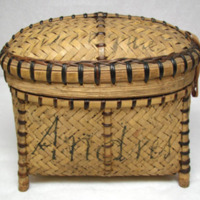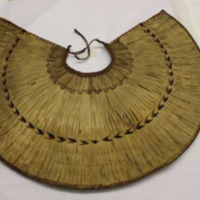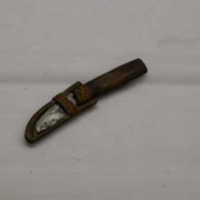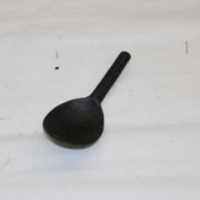Women's belt (Mayad)
Text
Blue fabric made of cotton in a grosgrain weave, the end pieces (each 24cm) are patterned using a red and yellow decorative insert technique. On the narrow sides of the cloth, the free, blue warp threads are twisted and alternately knotted together in pairs, so that a web is created, according to Lamprecht (1958: 1-53) the kinawka'wa, spider web. The ends of the twisted warp threads are alternately decorated with red and yellow tassels, known as ha'bong, flowers. The ornamental entry patterns show in order: a star, tinaltallo (yellow and red), a copper arm ring, ginigi'ling (yellow and red) and a human figure, tinata'ggu (dark, here blue). The belt is worn so that the ornamental pattern appears on the wearer's back, and the ends of the belt are tucked between the fabric and the body so that the tassels and part of the fringed net hang freely. The function of the mayad belt is to cover the belly of the Ifugao woman, since the way the skirt is worn leaves it free. Exact web instructions from Lamprecht (1958: 25-28, fig.XVI, XVII)
Lit .: Lamprecht, F .: The Ifugao-Weaving. In: Folklore Studies Vol.17, 1958: 1-53
Share this



